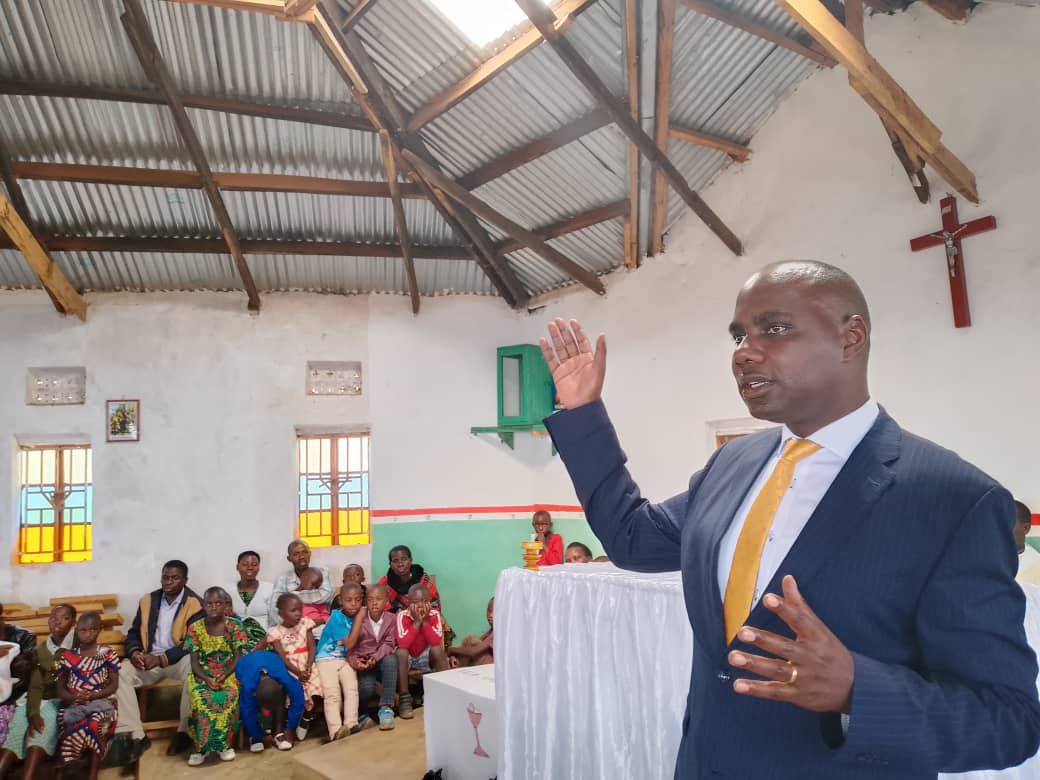Government Plans to Increase Fund Allocation for Parish Development Model
In a bid to accelerate poverty eradication and foster economic growth at the grassroots level, the Ugandan government has announced a substantial increase in funding for its Parish Development Model (PDM). According to State Minister of Finance, Planning and Economic Development Hon. Henry Musasizi, the government plans to double the current Parish Development Model funds […] The post Government Plans to Increase Fund Allocation for Parish Development Model appeared first on Watchdog Uganda.

In a bid to accelerate poverty eradication and foster economic growth at the grassroots level, the Ugandan government has announced a substantial increase in funding for its Parish Development Model (PDM).
According to State Minister of Finance, Planning and Economic Development Hon. Henry Musasizi, the government plans to double the current Parish Development Model funds from Shs100 million to Shs200 million per parish.
This significant boost is aimed at addressing the growing poverty levels, particularly in rural and sub-regional areas such as Kigezi, which have been struggling with increasing poverty rates.
The government’s Parish Development Model was launched by President Yoweri Museveni in February 2022 as part of a broader strategy to integrate Uganda’s largely subsistence farming population into the formal economy and reduce poverty across the country.
The initiative focuses on providing targeted support at the parish level, where most of the country’s population resides. It is viewed as the government’s final strategy to eliminate poverty and is critical for achieving the country’s socio-economic development goals.
Musasizi expressed concerns about the escalating poverty in the Kigezi Sub-region, noting that national poverty levels had increased from 24% to 27%, with poverty in Kigezi rising by 20.1%.
He emphasized the urgent need for local leaders and communities to engage in concerted efforts to combat poverty. He made these remarks while speaking at the 2024 Bishop’s Annual Appeal Fund (BAAF) in Kabale, highlighting the critical role of local leadership in promoting development.
The increased funds for PDM will specifically target poverty reduction activities at the household level.
The aim is to enhance household incomes by supporting smallholder farmers and facilitating economic activities such as commercial agriculture, processing, and value chain development. Musasizi urged leaders and communities to embrace government programs like Emyooga and PDM, which are designed to boost productivity, profitability, and income generation.
This initiative comes on the heels of several previous government efforts to reduce poverty, including the Youth Livelihood Program and Operation Wealth Creation.
However, Uganda has faced challenges in sustaining the impacts of these initiatives. PDM is being marketed as the most promising solution to integrate Uganda’s 17.5 million people living in poverty into the money economy. The program aims to reduce poverty and income inequality through investments in infrastructure, financial inclusion, production, and processing of key commodities.
The government has identified 18 priority commodities for development under PDM, including coffee, tea, maize, rice, dairy, and cotton. These products are expected to drive economic growth at the local level and improve the livelihoods of rural households. Minister Musasizi also echoed the president’s call to embrace commercial agriculture, urging citizens to focus on income-generating activities to improve their livelihoods.
The Parish Development Model operates through seven key pillars: production and processing, infrastructure and economic services, financial inclusion, social services, community data, governance and administration, and mindset change. The model encourages collaboration between government and private sector actors to ensure sustainable development, with a focus on measurable results at the parish level.
With over 10,000 parishes in Uganda, each with populations ranging from 450 to 30,000 people, the PDM is being hailed as a comprehensive strategy to tackle poverty from the ground up. As Uganda continues to face food insecurity, with 15.6 million people classified as food-insecure, the PDM is seen as a last-mile solution to ensure that resources and services reach the most vulnerable populations.
As part of the broader National Development Plan, the PDM is expected to contribute to achieving the country’s poverty reduction target of 18.5% and addressing income inequality. While the government remains optimistic, it is clear that sustained efforts and active participation from local communities are essential to the success of this ambitious poverty eradication initiative.
The post Government Plans to Increase Fund Allocation for Parish Development Model appeared first on Watchdog Uganda.


